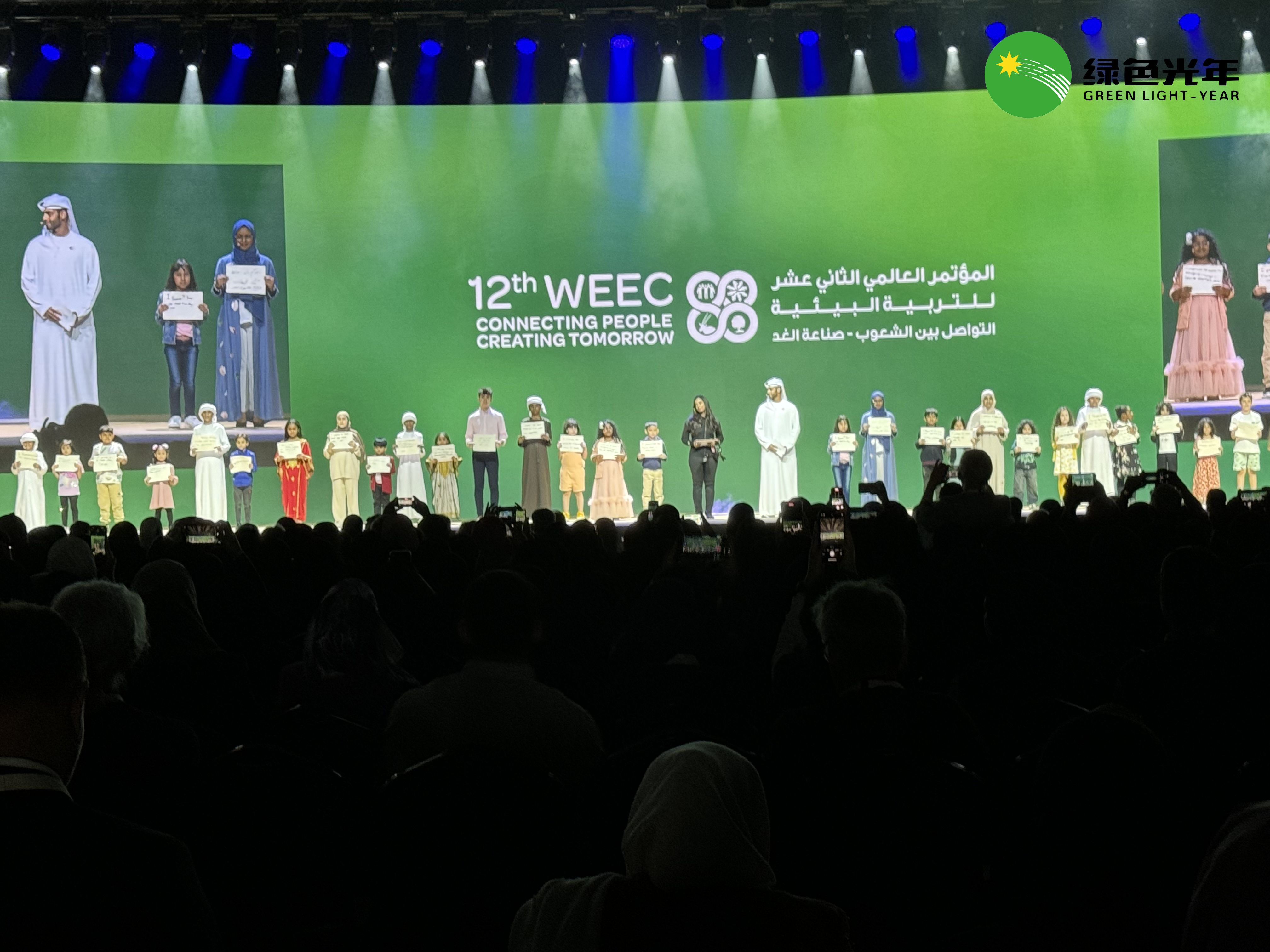On the first day of the WEEC conference, the main topics of discussion among experts and professors were Education for Sustainable Development (ESD) and Environmental Education (EE). After a full day of presentations, I gained profound insights into both forms of education.

PHOTO: Children who made pledges for climate action in Abu Dhabi
Part One: The Difference Between Education for Sustainable Development and Environmental Education.
Historically, the term Education for Sustainable Development (ESD) has been in use for several decades, with the initial definition and concept of Environmental Education (EE) emerging from the International Working Meeting on Environmental Education held in the USA in 1970{1}. This initial definition added elements of decision-making and behavior formation to the foundation of ESD. A few years later, the term EE was recognized at the United Nations Conference on the Human Environment in Stockholm. However, its definition still remained within the framework of ESD, delving deeper into areas like environmental governance and decision-making. Thus, ESD appears to have a broader and more general scope, while EE is more targeted and in-depth.

PHOTO: Welcome address by the Secretary-General of the World Environmental Education Congress Network
Part Two: Should We Promote More Education for Sustainable Development or Environmental Education, and Why?
Throughout the day’s conference, I learned that ESD covers a wider and more superficial field, making it more accessible, whereas EE is more specific and profound, demanding a higher educational threshold. Therefore, I believe schools should promote the widespread adoption of ESD to ensure everyone from children to the elderly recognizes its importance. EE, on the other hand, could be taught to elite groups or those with a keen interest in the subject. This approach would also conserve substantial educational resources.
Part Three: How to Implement This Education?
In this morning’s plenary session, American education expert Ginger Potter suggested a useful approach for the United States: Given that the U.S. comprises 50 states, each determining its own educational approach, there might currently be 50 states doing 50 different things. Perhaps only half of the states require schools to teach ESD, which could result in a failure to ensure all American students understand the environment and sustainable development and recognize their personal responsibility. The last time this issue was identified and raised in a conference was in 1980, and it has since been neglected and underfunded. She urged the U.S. government and citizens to pay attention to this issue and invest in it.

PHOTO: Plenary session at the opening ceremony
Inspired by her example, I believe we should make learning ESD a mandatory personal responsibility for every citizen. I call on the government for support and investment so that children can learn about sustainable development from an early age. Many overlook this form of education today, but it truly teaches children how to coexist with nature and consider future generations. It’s not just about environmental protection; it also cultivates their moral compass, which is undoubtedly beneficial for the growth and education of the children.

PHOTO: Gao Zhitong
Gao Zhitong is currently a student at Shanghai Concordia International School. He first connected with Green Light-Year during the 2018 “Take Xuesen Road Again” Northwest Environmental Protection Science and Technology Research Camp, where he stood out as the best debater and reporter. He also participated in a meeting with the curator of the Qian Xuesen Museum. In 2020, he joined the TrashTrack project team, collaborating with five other high school students. They used GPS trackers to investigate the final destinations of sorted waste in different communities in Shanghai. Their findings were featured in a full-page article in the Jiefang Daily . He also encouraged his sister, who attends the University of Sydney, to write a popular science article for Green Light-Year about how American environmental organizations track the final destinations of electronic waste.
He is actively involved in social practice activities organized by his school and community, earning praise and trust from teachers in both contexts. He has served as a department head in the student council and has achieved notable successes in numerous activities.
Reference citation:
{1}:https://www.ncbi.nlm.nih.gov/pmc/articles/PMC6331178/
How freshmen perceive Environmental Education (EE) and Education for Sustainable Development (ESD) , Michaela Maurer Franz Xaver Bogner
Written by Gao Zhitong (Shanghai Concordia International School)
Image by Gao Zhitong, Gong Wenzhu
Edited by Sheng Xiajing
